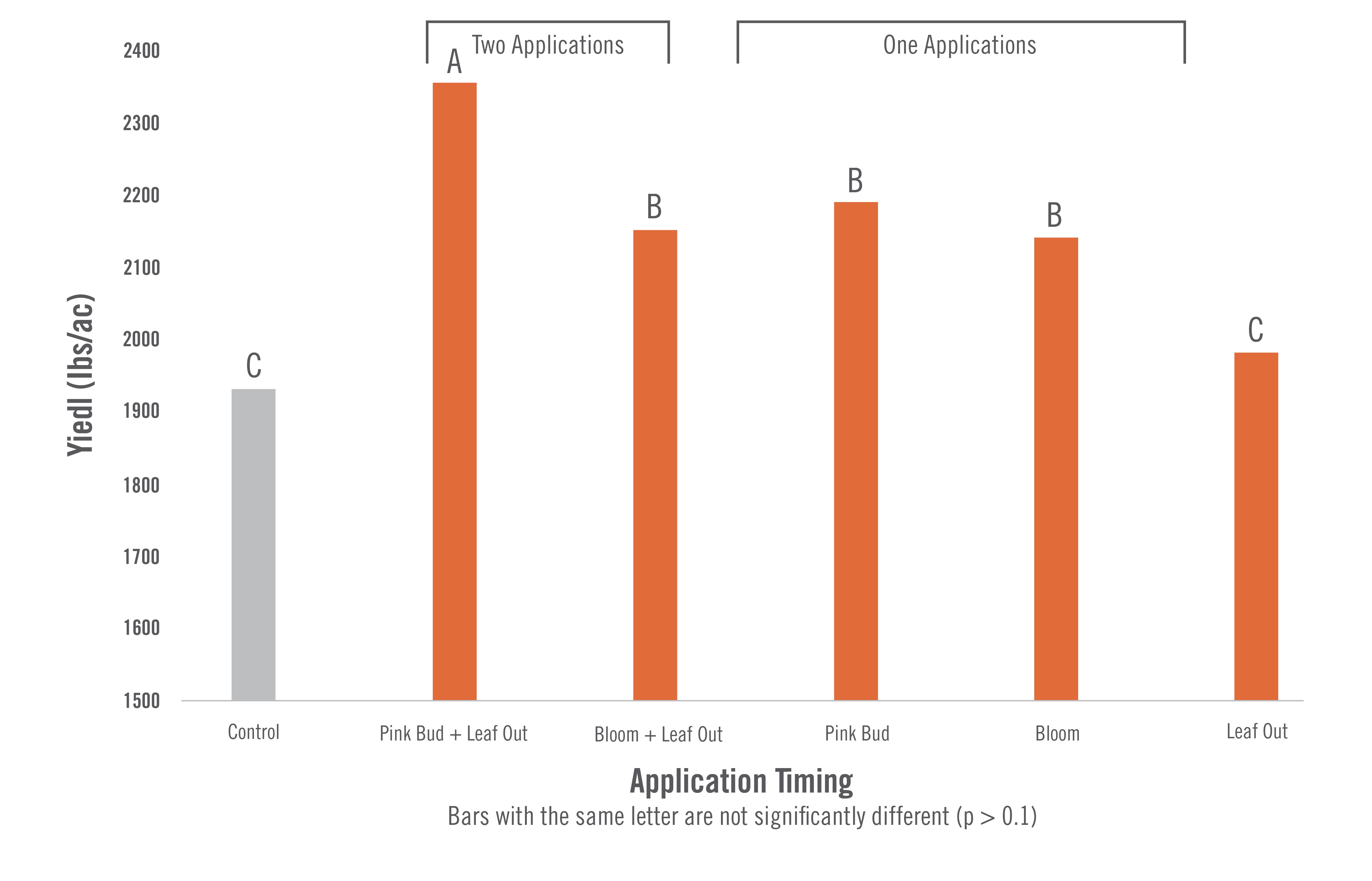
Latest Resources
September 29, 2025
How Nitrogen Efficiency Improves Flower Retention
For many nut tree growers, a successful harvest begins with a successful bloom.
A short or inconsistent bloom can limit the time bees have for pollination, directly impacting yield potential.
A ready-to-use liquid formulation, OPTRIENT™ MoCo-Ni is designed for this purpose. It contains molybdenum (Mo), cobalt (Co) and nickel (Ni) — three key micronutrients that work in synergy to support reduced stress and a healthier tree during the blooming season.
The Science Behind Better Flower Retention
A plant's ability to manage stress during bloom is directly linked to its nutrient uptake and processing.
“Molybdenum, cobalt and nickel play key roles in nitrogen utilization and nitrogen metabolism in the plant, which in turn makes the plant healthier and less stressed,” said TJ Bingham, technical agronomist for Koch Agronomic Services (KAS). “In orchards, if a tree is not stressed, it’s going to have better flower retention.”
As a liquid foliar, OPTRIENT MoCo-Ni is applied directly to the leaf, allowing the nutrients to be quickly absorbed and readily available. In addition to promoting flower retention, the micronutrients also improve fruit setting and protect against premature fruit and nut drop.
Extending the bloom for better pollination
With increased flower retention, OPTRIENT MoCo-Ni can help maximize production and overall orchard performance.
“OPTRIENT MoCo-Ni can really help growers during the pre-bloom and blooming season,” said Mackenzie Chambers, territory business manager for KAS. “By keeping those flowers viable for a longer timeframe, bees have increased opportunities to pollinate, which has a direct correlation to yield.”
Proven results from the field
Expert insights, field observations and recent trial data all highlight the value of micronutrients in this targeted approach.
“Producing specialty crops, such as almonds, can be incredibly expensive for growers because of how long it takes for trees to begin producing,” Chambers stated. “Having a product that allows them to maximize their investment without breaking the bank is essential to their operation.”
Dustin Peton, a sales manager at North Valley Ag Services, agrees.
“In products containing these micronutrients, I have seen a consistent yield increase when used between pink bud and full bloom,” said Peton. “On average, these nutrients have led to a yield increase of about 250 to 350 pounds per acre with both ideal bloom weather and with poor weather conditions.”
OPTRIENT MoCo-Ni showed similar results with data indicating it provided significant yield increases compared to untreated trees across multiple application timings:
- An increase of up to 422 lbs/ac when applied at pink bud and leaf out.
- An average increase of 228 lbs/ac across other timings, including applications at full bloom.
OPTRIENT MoCo-Ni Improved Yield in Almond Production1

Learn More About Improving Tree Health
By supporting tree health during the blooming season, growers can create more opportunities for a successful harvest. To see how this targeted nutrition fits into a larger seasonal plan,
1The underlying data was provided by Sysma Agriculture Research under a Research Trial Financial Support Agreement with Koch Agronomic Services, LLC, and this institution, nor the individual researchers referenced, endorse or recommend any product or service.


